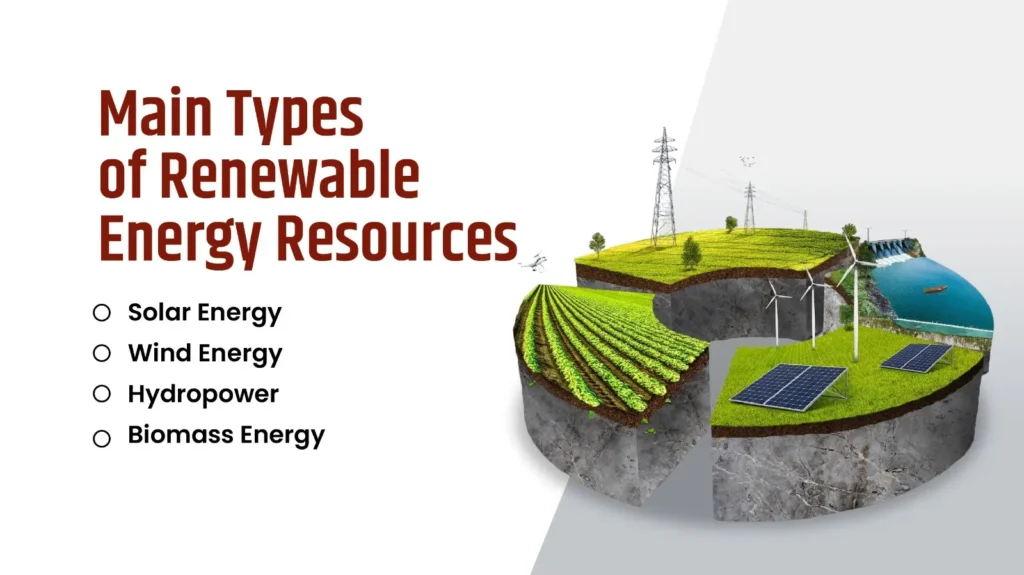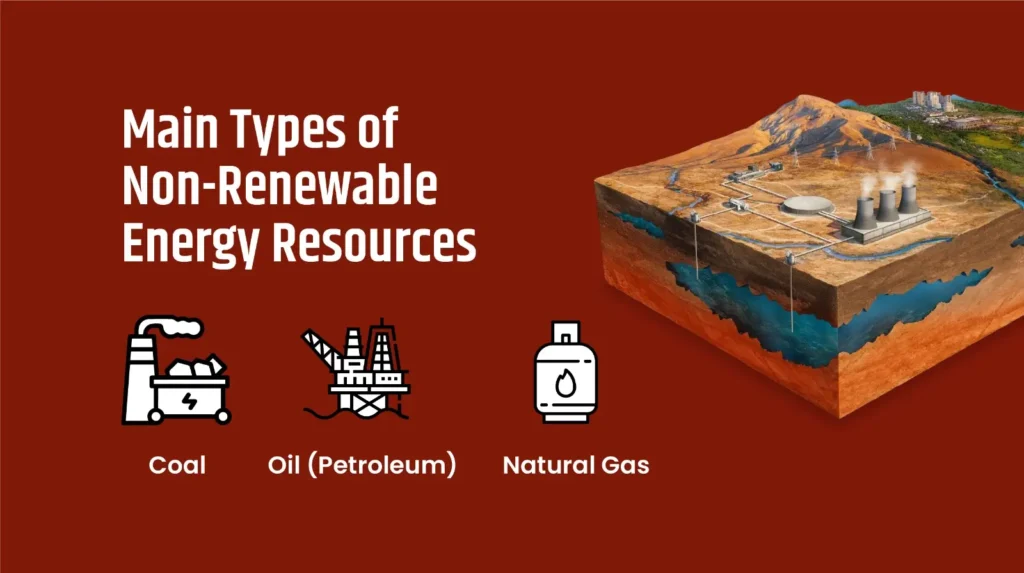Key Differences Between Renewable and Non Renewable Energy Resources
- Home
- Blogs

Energy fuels everything around us. Every time you charge your phone, run your fans & appliances or drive a car, you’re consuming energy. But do you stop and think where this amazing energy actually comes from? There are many sources of energy. Some are clean and endless while others are limited, slowly running out and polluting. This is why understanding the difference between renewable and non renewable energy resources becomes really important.
In this blog, we’ll explore why choosing the right one matters.
What are Renewable Energy Resources?
Renewable energy resources are sources of energy that are naturally replenished on a human timescale. This means they don’t run out. This is the major difference between renewable and non renewable energy resources.
These resources are available in abundance and are also cleaner and environmentally friendly. A great choice because you’ll find that they produce little to no greenhouse gas emissions. Which means that they are a great key to fighting climate change.
Main Types of Renewable Energy Resources

Solar Energy
Solar energy is an important source. Solar panels and photovoltaic cells capture this amazing energy and turn it into electricity. It’s one of the most available and reliable sources of energy.
Also read: Advantages and Disadvantages of Solar Energy
Wind Energy
Wind turbines harness the kinetic energy of air and turn it into electricity. This energy is suitable for plain areas and coastal regions where wind flow is steady.
Read to know if wind power and solar energy can work together effectively
Hydropower
By harnessing the flow of rivers, dams and the ocean, you can generate hydropower. It’s also one of the largest sources of renewable electricity in the world.
Biomass Energy
This is one of the cleanest renewable energy sources as it’s often derived from organic materials. Wood, crop waste and even animal manure are used for it.
What are Non Renewable Energy Resources
Non-renewable energy resources are natural resources that cannot be replenished. That is to say, if you consume these resources, they might disappear forever. These resources were formed over millions of years through the slow geological processes of heat, pressure and decay.
The upside is that non renewable resources have increased the growth of industries and modernisation for centuries. However, the negative thing is that at this point, their consumption might lead to their complete depletion.
Main Types of Non Renewable Energy Resources

Coal
This is a black sedimentary rock that is rich in carbon. Coal is burned to produce heat and electricity. It’s one of the most polluting energy sources and contributes to air pollution.
Oil (Petroleum)
It’s a liquid fossil fuel taken from underground reservoirs. The oil is refined into gasoline, diesel and other fuels, which are heavily polluting and major contributors to global warming.
Natural Gas
This gas is made of methane and burns cleaner than coal and oil. However, it’s still not a clean source of energy and emits carbon. It’s often used for heating and electricity purposes.
Nuclear Energy
Nuclear power relies on uranium, which is a non renewable energy source. It produces radioactive waste which is harmful to the environment as well as humans.
Difference Between Renewable and Non Renewable Energy Resources
Characteristics | Renewable Resources | Non-Renewable Resources |
Definition | Natural resources that are replenishable | Natural resources that can’t be replenished within a human timescale |
Formation | They are formed through ongoing natural processes | They are formed through slow geological processes |
Examples | Solar energy, Wind energy, Hydropower, Geothermal energy | Coal, Oil, Natural Gas, Copper, Iron |
Environmental Impacts | Minimal emissions and pollution | Contributes to greenhouse gases and air & water pollution |
Costs | Initial setup is higher with long-term cost savings | Typically low upfront costs but rising long term expenses |
Supply | Unlimited if the ecosystem remains intact | Finite supply |
Long-term Sustainability | Ideal for long-term energy goals | Unsustainable in the long run |
Environmental Impact: Comparing Renewable and Non Renewable Energy Resources
- Low to No Greenhouse Gas Emissions –There is no pollution since solar panels and wind turbines harness the power of the sun and wind. With renewable energy sources, this is primarily true. They are an excellent choice because, even after extensive use, no dangerous gases or pollutants are released.
You can learn more about wind vs. solar energy.
Clean Air – Unlike fossil fuels, renewable energy sources don’t emit harmful pollutants into the atmosphere. You know what that implies? Less smog, cleaner air and fewer respiratory diseases. This proves to be advantageous for city life.
Less Water and Land Damage – For the most part, renewable energy systems consume very little water compared to the enormous power plants using coal or natural gas. The systems tend to minimize damage to the ecosystem and also take up less land. This is particularly true in terms of rooftop solar panel installation and offshore wind farms.
Sustainable by Nature – All the renewable energy sources like wind, sun and water are natural and fully replenishable. As long as the world continues to exist, you’ll find them in every corner. This makes renewable energy sustainable in the long run, something that isn’t the case with non renewable energy resources.
Non-Renewable Energy
High Greenhouse Gas Emissions – One of the main sources of carbon dioxide emissions is fossil fuels, particularly coal. Massive volumes of greenhouse gases are released when coal is burned for electricity, trapping heat and contributing to climate change.
Air Pollution – You already know that the growing industries use non renewable energy sources to produce power. Power plants and vehicles run on oil and gas that emit toxic, air-polluting gases. These can cause serious health problems among people.
Water Pollution and Waste – As the factories’ waste goes down into the rivers, the water gets polluted due to the non-renewable energy resources. Toxicity from heavy metals and other fossil fuels ruins the water, harming wildlife and communities.
Unsustainable by Nature – As non-renewable energy resources are limited, they can never be replaced once they run out. This makes them unreliable and unsustainable. On top of this, they are also harmful to the environment.
Conclusion
Energy is everywhere we go. It’s the driving force of life. As we’ve explored the difference between renewable and non renewable energy resources, we get a clear understanding of the two. The choice between the two is what shapes the future. One leads to a clean and green world while the other paves the path to a world where resources are limited and the environment is unsafe.
